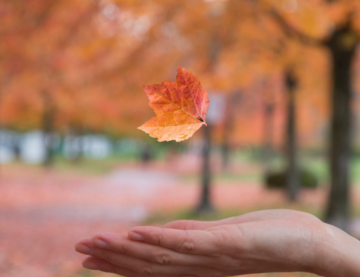Subscribe to our newsletter
Departing from a traditional academic research position – how, why and advice
As part of Digital Science’s celebrations for Ada Lovelace Day, for the rest of October we are running a collection of blog posts featuring some of the great women that work across Digital Science and our portfolio companies. Up now is Amy Brand, Digital Science’s VP Academic & Research Relations and VP North America. Amy has been very involved in the Ada Lovelace Day celebrations; she was interviewed on the topic for BBC World Service (click here to listen, the Ada Lovelace Day section is from 26:35). She also participated in an Ada Lovelace Day panel on women in publishing, hosted by STEMwomen.net, who recently interviewed Amy for their In The Spotlight series.
I didn’t always know I wanted to be a scientist. What I did know from a very young age is that I wanted to live immersed in the world of words and text, an inclination that later evolved into a passion for understanding how language really works.
I grew up on the Upper West Side of Manhattan in the 1960s and 70s, and attended one of the first truly experimental open classroom schools, called The Bank Street School. New York City was a tad more littered and dangerous back then, but more culturally rich and diverse than it is today. Still, I was largely free as a pre-teen to explore the streets of the city. My preferred haunts were the small, old bookstores of the West Side, of which there were many (and don’t get me started on the rise of the large bookstore chains…).
My favorite was a store called the Gotham Book Mart on West 47th street. The attractive wrought iron sign that marked the store read “Wise Men Fish Here”. Gotham was famous as a kind of literary community center. The store’s owner, Frances Stellof, had visited my school when I was in sixth grade to talk about the joys of running a bookstore – the literary soirees, founding the James Joyce society, distributing copies of banned books like those of Henry Miller and D.H. Lawrence. What a glamorous intellectual life, I thought. “Always remember, children,” she told our sixth grade class, “books are your friends.”
I had another life-defining experience soon thereafter in the seventh grade, when a new English teacher arrived at our school. He didn’t seem to appreciate what Bank Street was all about – namely, immersive, experiential and self-directed learning – and proceeded to teach us traditional grammar and, amazingly, even how to diagram sentences!
Lo and behold, nothing in my grade school curriculum compared in excitement to the joys of creating sentence diagrams and imposing logical structure on language. I went off to college determined to study linguistics and, later, to graduate school at MIT to study with Noam Chomsky himself, and carry out research on how the brains of children master syntactic structure.
Understanding how information is structured and communicated remains a real passion for me today. Books do as well. But the real focus of my professional life has been the ongoing transformation of scientific communication, from institutional, researcher, publisher perspectives.
I feel extremely fortunate to be in the midst of a long and varied career immersed in scientific and scholarly communications: as an MIT-trained researcher, a postdoc at the University of Pennsylvania, an executive editor at The MIT Press, a director at CrossRef and ORCID, a senior administrator at Harvard University, and now as VP at Digital Science, where I manage U.S. operations and cultivate institutional partnerships.
I don’t recall giving much thought to gender inequities prior to graduate school. At MIT in the 1980s, it was hard not to read volumes into the dearth of women’s restrooms on campus. There was only one at the time in the whole of MIT’s famous infinite corridor, and it wasn’t much better in the building that then housed the Department of Brain and Cognitive Sciences. More to the point, I recall being on the lookout for a viable female mentor among the faculty in our department. But the few senior women there had more than their fair share of advisees. I ended up with a male advisor, and taking an assertiveness training course on the side.
I don’t consider my departure from a traditional academic research and teaching position to be a departure from a life in science. I chose to leave at the time, towards the end of my postdoctoral fellowship, because I found the subject matter of research information and communications more compelling, and a great way to put my formal training in science to use in the broader knowledge creation enterprise.
So my message to younger women (and men) in science is: always cultivate your deep, intuitive interests, and don’t be afraid of meandering career paths and leaps of faith — what seems like a step sideways is often a shortcut upwards. And it will all take perfect narrative shape in hindsight, when you have the privilege of looking back.
Amy Brand joined Digital Science in 2014 as VP Academic and Research Relations and VP North America to manage our US office and develop commercial, policy, and research relationships with North American research institutions. From 2008 to 2013, Brand worked at Harvard University, first as Program Manager of the Office for Scholarly Communication and then as Assistant Provost for Faculty Appointments and Information. Before moving to Harvard, she held long-term positions as an Executive Editor at the MIT Press and as Director of Business and Product Development at CrossRef. Brand was a founding member of the ORCID Board of Directors and regularly serves in advisory roles for key community initiatives in digital scholarship. She holds a B.A. in linguistics from Barnard College and a PhD in cognitive science from MIT.
When not at work, Amy can usually be found herding kids, running a marathon, or at a power yoga class.



